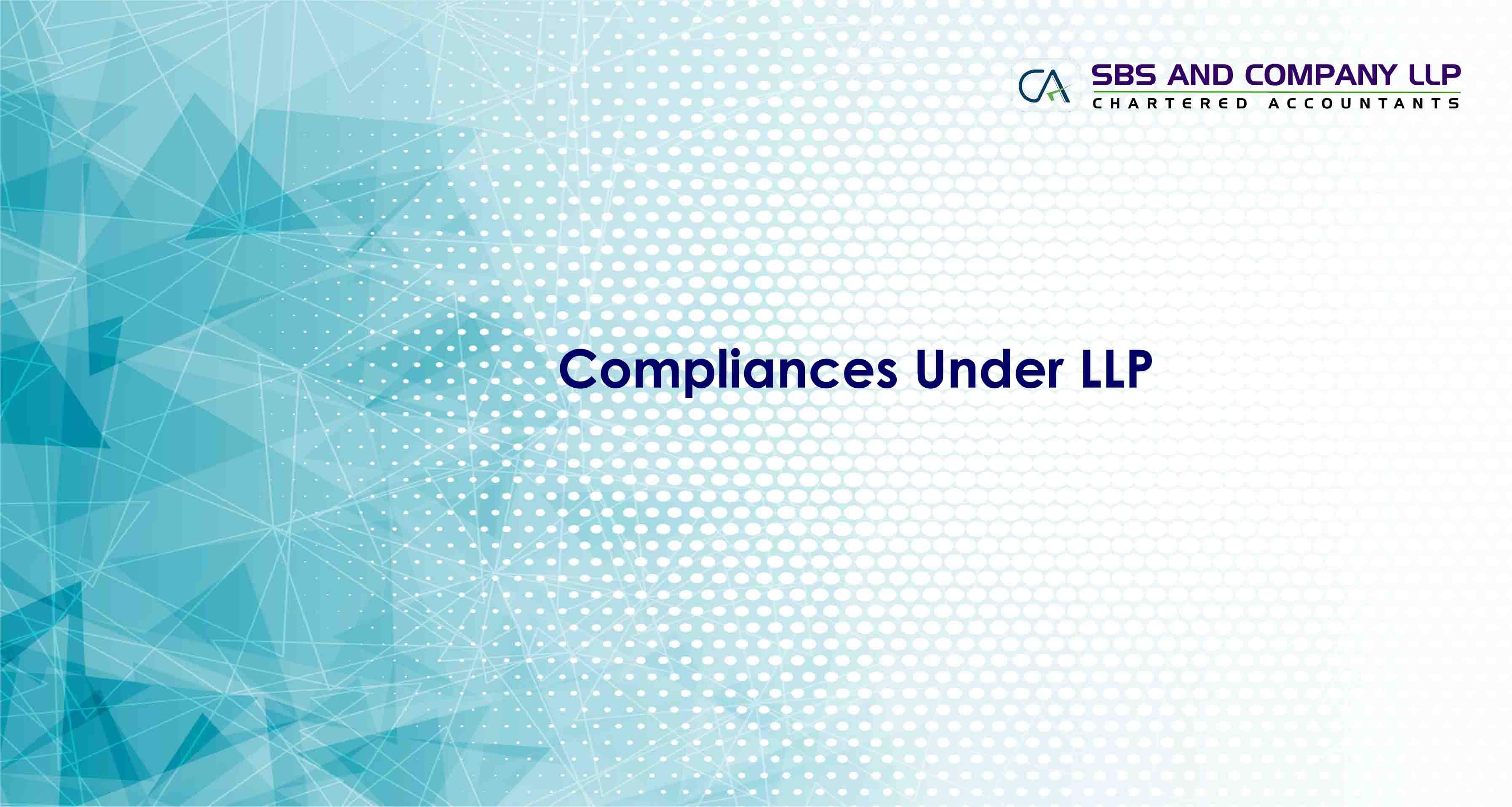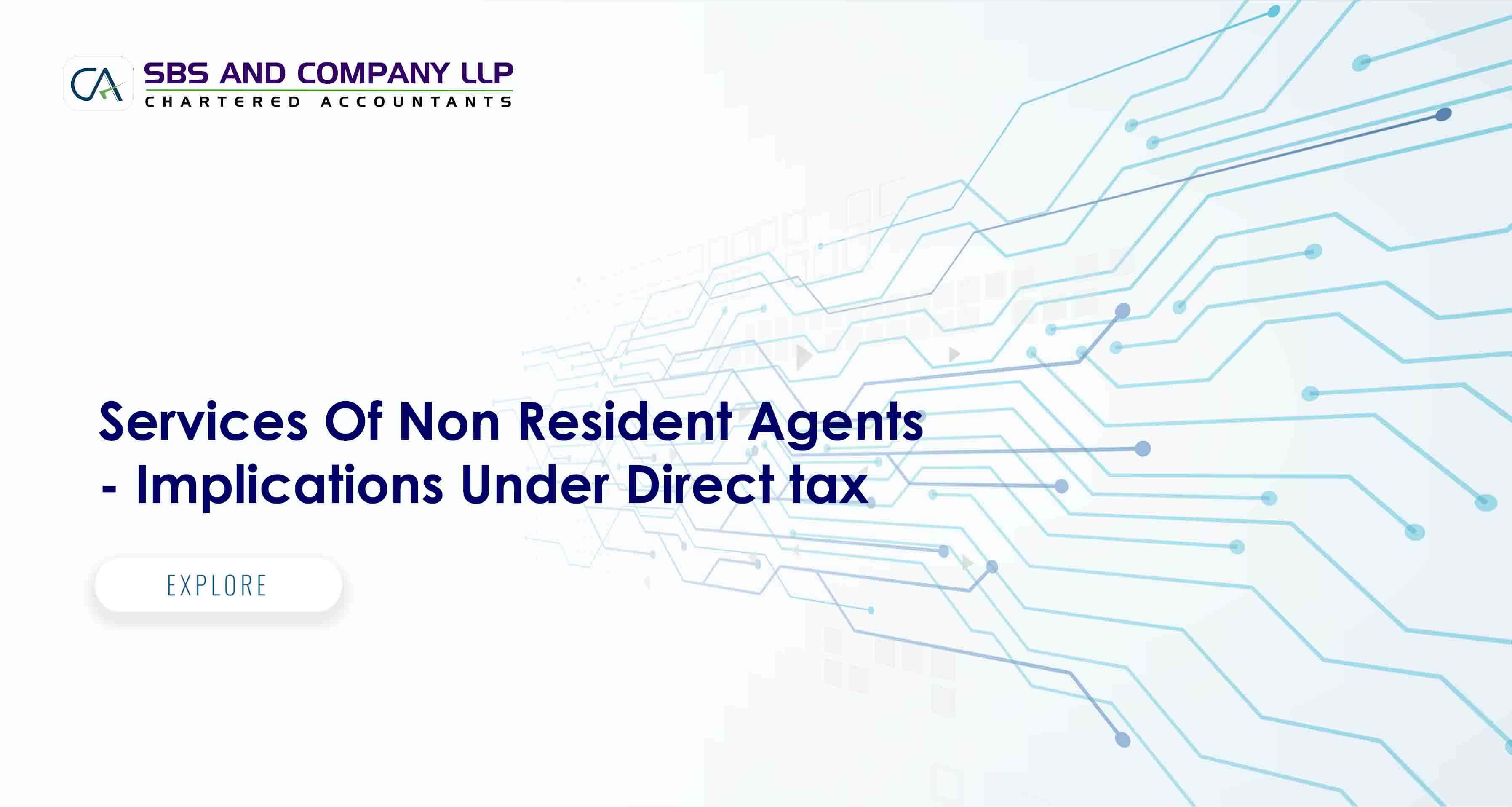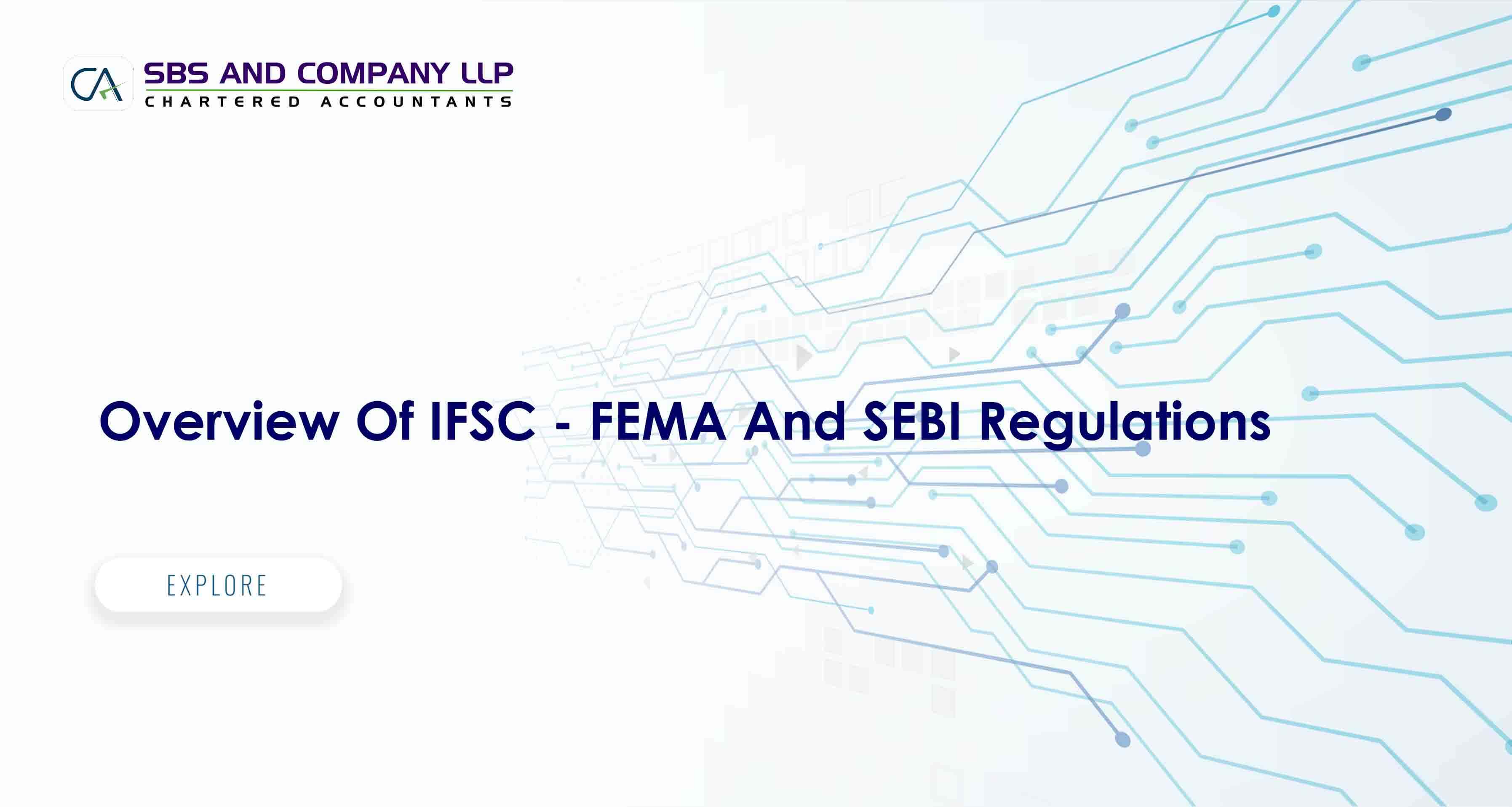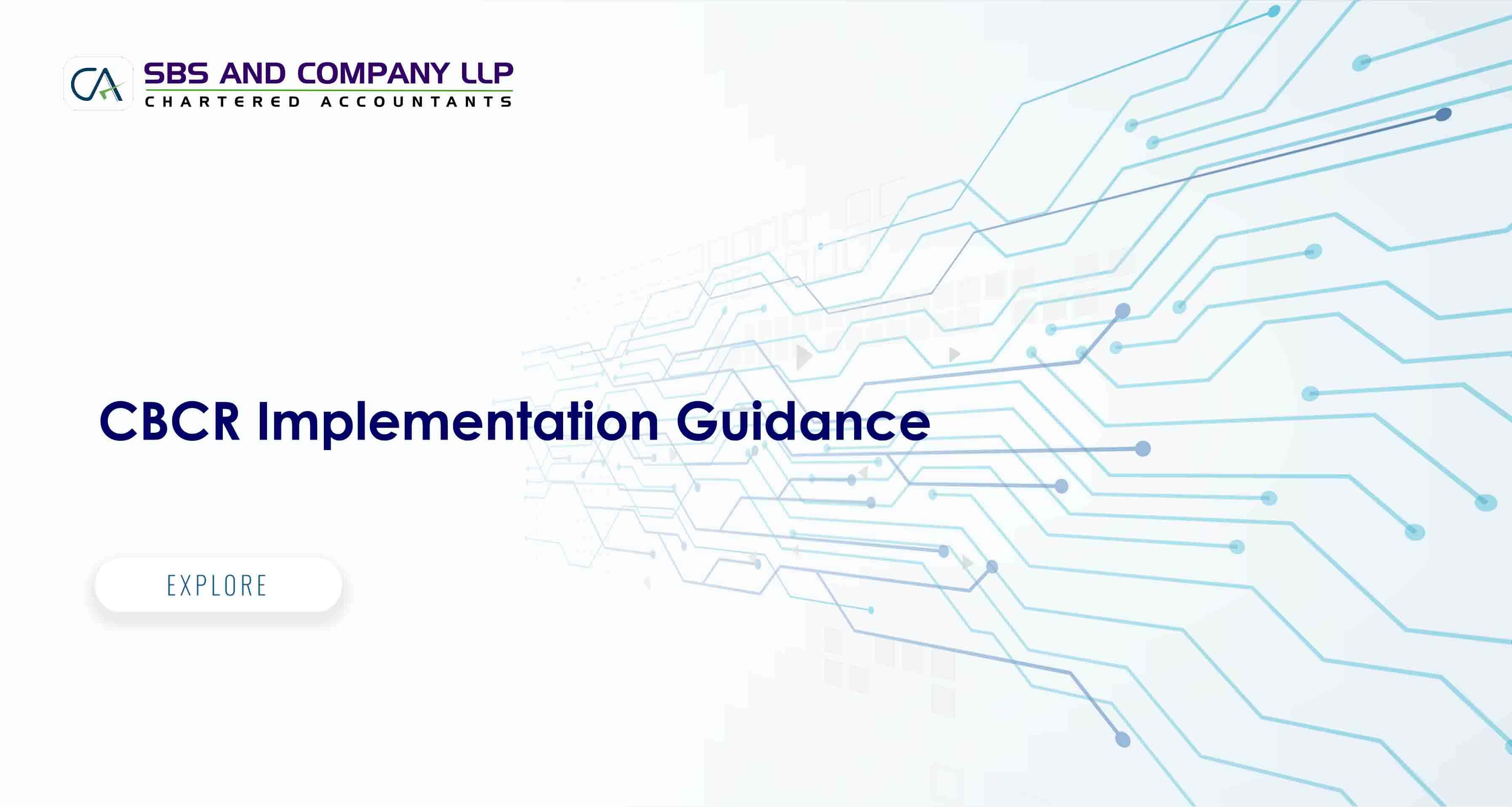All are aware that a Limited Liability Partnership (LLP) is a body corporate, governed by the Limited Liability Partnership Act, 2008 and rules framed thereunder. An LLP has a distinct legal entity separate from that of its partners, it has perpetual succession and any change in the partners shall not affect the existence, rights or liabilities of the LLP. It is a vehicle enabling the Partnerships to enter in to a Corporate frame work with Limited liability, and giving the partners/members the option and flexibility of devising/structuring the control document i.e., LLP agreement, as mutually agreed by the partner/members.
Similar to Companies registered under the Companies Act, 1956/2013, compliances by a Limited Liability Partnership [LLP] can be classified in to (a) continuous compliance i.e., compliance as to maintenance of minimum partners/designated partners, (b)event based, i.e., happening of an event such as increase of Contribution, Admission of Partners, Resignation of Partners, Shifting of Registered office address of the LLP etc., and accordingly, the LLP will have to file the returns/forms/information with the Registrar of Companies/LLP, in compliance with the said provisions of the LLP Act and (c) Time based compliances i.e., based on time, like filing of Annual Return and Statement of Solvency.
An effort has been made to list out the Continuous compliance, Event based and Time based
Compliances:
Continuous Compliances:
|
Sl. |
Name of the Section of |
Compliance with regard to |
Penalty for non-Compliance |
|||||||
|
the Act, along with the |
||||||||||
|
No. |
||||||||||
|
|
|
|||||||||
|
relevant rule |
|
|
||||||||
|
|
|
|
||||||||
|
|
|
|
|
|
|
|
|
|
|
|
|
|
Chapter –II |
The LLP shall have a minimum of Two (02) Partners. |
If at any time, the number of Partner in a LLP |
|||||||
|
1. |
|
|
|
|
|
|
|
|
is reduced to less than Two(02), and the LLP |
|
|
Section 6 (1) & (2) |
|
carried on the business for more than Six (06) |
||||||||
|
|
|
|||||||||
|
|
|
|
|
|
|
|
|
|
months, with the number so reduced, then |
|
|
|
|
|
|
|
|
|
|
|
the remaining Partner shall be liable |
|
|
|
|
|
|
|
|
|
|
|
personally for the obligations of the LLP |
|
|
|
|
|
|
|
|
|
|
|
incurred during the period |
|
|
|
|
|
|
|
|
|
|
|
|
|
|
|
Chapter – II |
The LLP shall have at least Two (02) Designated Partners who are |
For non-compliance of the requirement, the |
|||||||
|
2. |
|
|
|
|
|
|
|
individuals and at least one of them shall be resident in India. |
LLP and its every Partner, shall be punishable |
|
|
Section 7(1) |
|
with fine : |
||||||||
|
|
|
|||||||||
|
|
|
|
|
|
|
|
|
Explanation: “Resident in India” means a person who has stayed |
|
|
|
|
|
|
|
|
|
|
|
in India for a period of not less than 182 days during the |
Not less than Rs.10,000/-, but which may |
|
|
|
|
|
|
|
|
|
|
immediately preceding one year |
extend to Rs.5,00,000/-. [Sec.10(1)] |
|
|
|
|
|
|
|
|
|
|
|
|
|
|
|
Chapter – III |
Invoices, Official Correspondence and publication of the LLP shall |
For non-compliance of the requirement, the |
|||||||
|
3. |
|
|
|
|
|
|
|
bear: |
LLP shall be punishable with fine : |
|
|
Section – 21 (1) |
|
|
||||||||
|
|
The name, address of its registered office and registration number |
|
||||||||
|
|
|
|
|
|
|
|
|
Not less than Rs.2,000/-, but which may |
||
|
|
|
|
|
|
|
|
|
of the LLP, and a Statement that it is registered with Limited |
extend to Rs.25,000/-. [Sec.21 (2)] |
|
|
|
|
|
|
|
|
|
|
Liability; and |
|
|
|
|
|
|
|
|
|
|
|
A statement that it is registered with Limited Liability. |
|
|
|
|
|
|
|
|
|
|
|
|
|
|
16 | P a g e
|
Sl. |
Name of the Section of |
Compliance with regard to |
Penalty for non-Compliance |
||||
|
the Act, along with the |
|||||||
|
No. |
|||||||
|
|
|
||||||
|
relevant rule |
|
|
|
||||
|
|
|
|
|
||||
|
|
|
|
|
|
|
|
|
|
|
|
Chapter – VII |
|
Maintenance of Books of accounts on cash basis or accrual basis |
For non-compliance of the requirement, the, |
||
|
4. |
|
|
|
|
and according to double entry system of accounting, at the |
LLP shall be punishable with fine : |
|
|
|
Section 34 r/w |
Rule |
registered office of the LLP. |
|
|||
|
|
|
|
|||||
|
|
|
No.24 of the LLP Rules, |
Auditing of Accounts: Applicable to LLPswhose turnover exceeds |
Not less than Rs.25,000/-, which may extend |
|||
|
|
2009. |
|
|
to Rs.5,00,000/- [Sec.34(5)]. |
|||
|
|
|
|
|
|
Rs.40,00,000/- in any financial year, or whose contribution |
|
|
|
|
|
|
|
|
exceeds Rs.25,00,000/-. |
Every Designated Partner shall be |
|
|
|
|
|
|
|
Else auditing not required. |
punishable with fine: |
|
|
|
|
|
|
|
|
||
|
|
|
|
|
|
|
Not less than Rs.10,000/- which may extend |
|
|
|
|
|
|
|
|
to Rs.1,00,000/-[Sec.34(5)]. |
|
|
|
|
|
|
|
|
|
|
Time Based Compliance:
|
Sl. |
N a m e |
o f |
t h e |
|
|
|
|
|
|
|
|
|
|
||
|
Section of the Act, |
Compliance with regard to |
Compliance with in |
|
Form and |
|
Penalty for non-Compliance |
|||||||||
|
No. |
along with |
the |
|
|
|
|
attachments |
||||||||
|
|
|
|
|
|
|
||||||||||
|
|
relevant rule |
|
|
|
|
|
|
|
|
|
|
|
|||
|
|
|
Chapter – VII |
|
Preparation of Statement of Account and |
Six |
(06) |
months |
LLP |
Form |
No.8, |
For non - compliance of the |
||||
|
1. |
|
|
|
|
|
Solvency for the FY, within a period of Six |
from the end of the |
along |
with |
the |
requirement, the, LLP shall be |
||||
|
|
Section |
34 |
r/w |
(06) months from the end of the Financial |
F Y |
i . e . , |
3 0 t h |
Statement of Assets |
punishable with fine :Not less than |
||||||
|
|
|
and |
Liabilities |
and |
Rs.25,000/-, which may extend to |
||||||||||
|
|
|
Rule |
No.24 |
of |
year, and filing with ROC. |
September of every |
I n c o m e |
a n d |
|||||||
|
|
|
Rs.5,00,000/- [Sec.34(5)]. |
|||||||||||||
|
|
|
the |
LLP Rules, |
|
year. |
|
|
Expenditure |
and |
||||||
|
|
|
|
|
|
|
disclosure |
under |
Every Designated Partner shall be |
|||||||
|
|
2009. |
|
|
|
and |
|
|
p r o v i s i o n s |
o f |
||||||
|
|
|
|
|
|
|
|
|
|
section |
22 |
of |
the |
punishable with fine: Not less than |
||
|
|
|
|
|
|
|
|
|
|
|
Micro, |
Small |
and |
Rs.10,000/- which may extend to |
||
|
|
|
|
|
|
|
|
Filing with Registrar |
M |
e |
d i |
u |
m |
Rs.1,00,000/- [Sec.34(5)]. |
||
|
|
|
|
|
|
|
|
with in 30 days of 6 |
E n t e r p r i s e s |
+ |
||||||
|
|
|
|
|
|
|
|
Development |
Act, |
Additional fee of Rs.100/- for each |
||||||
|
|
|
|
|
|
|
|
months i.e., 30th |
2006,is to be added |
day of delay in filing the return, after |
||||||
|
|
|
|
|
|
|
|
October. |
|
as attachment. |
|
30 days. |
||||
|
|
|
|
|
|
|
|
|
|
|
|
|
|
|
|
|
17 | P a g e
|
Sl. |
N a m e |
o f |
t h e |
|
|
|
|
|
|
|
|
|
|
|
Section of the Act, |
Compliance with regard to |
Compliance with in |
Form and |
Penalty for non-Compliance |
|||||||||
|
No. |
along with |
the |
|
|
|
|
attachments |
||||||
|
|
|
|
|
|
|
|
|
||||||
|
|
relevant rule |
|
|
|
|
|
|
|
|
|
|
||
|
|
|
Chapter – VII |
|
Every LLP shall file Annual Return with the |
Within Sixty (60) |
LLP Form No.11, |
For non - compliance of the |
||||||
|
|
|
|
|
|
Registrar with Sixty (60) days of closure of |
days of closure of its |
mentioning the |
requirement, the, LLP shall be |
|||||
|
2. |
|
Section |
35 |
r/w |
its financial year |
|
|
financial |
year. i.e., |
details as to the |
punishable with fine :Not less than |
||
|
|
|
Rule 25 |
of |
the |
|
|
|
30 |
th |
May |
of every |
Partners, |
Rs.25,000/-, which may extend to |
|
|
|
|
|
|
|
Rs.5,00,000/- [Sec.35 (2)]. |
|||||||
|
|
|
LLP Rules, 2009. |
The annual return |
of an |
LLP having |
year. |
|
|
Contribution |
Every Designated Partner shall be |
|||
|
|
|
|
|
|
turnover uptoRs. 5 |
Crores, |
during the |
|
|
|
|
received from |
|
|
|
|
|
|
|
|
|
|
|
punishable with fine: Not less than |
||||
|
|
|
|
|
|
corresponding FY or contribution uptoRs. |
|
|
|
|
them against |
|||
|
|
|
|
|
|
|
|
|
|
Rs.10,000/- which may extend to |
||||
|
|
|
|
|
|
50 Lakhs, shall be accompanied with a |
|
|
|
|
their obligation, |
Rs.1,00,000/- [Sec.35(2)]. |
||
|
|
|
|
|
|
certificate from a |
designated partner, |
|
|
|
|
details of any |
+ |
|
|
|
|
|
|
|
other than the signatory to the annual |
|
|
|
|
penalties |
Additional fee of Rs.100/- for each |
||
|
|
|
|
|
|
|
|
|
|
day of delay in filing the return, after |
||||
|
|
|
|
|
|
return, to the effect that annual return |
|
|
|
|
imposed on the |
|||
|
|
|
|
|
|
|
|
|
|
30 days. |
||||
|
|
|
|
|
|
contains true and correct information. |
|
|
|
|
LLP/Partner/ |
|
||
|
|
|
|
|
|
|
|
|
|
|
|
|
Designated |
|
|
|
|
|
|
|
In all other cases, the annual return shall |
|
|
|
|
Partners, and |
|
||
|
|
|
|
|
|
be accompanied with a certificate from a |
|
|
|
|
details of |
|
||
|
|
|
|
|
|
Company Secretary in practice to the |
|
|
|
|
interests of the |
|
||
|
|
|
|
|
|
effect that he has verified the particulars |
|
|
|
|
Partners/Designat |
|
||
|
|
|
|
|
|
from the books and records of the limited |
|
|
|
|
ed Partners in |
|
||
|
|
|
|
|
|
liability partnership and found them to be |
|
|
|
|
other entities. |
|
||
|
|
|
|
|
|
true and correct. |
|
|
|
|
|
|
|
|
|
|
|
|
|
|
|
|
|
|
|
|
|
|
|
|
|
|
|
|
|
|
|
|
|
|
|
|
|
|
18 | P a g e
Event Based Compliance:
|
Sl. |
N a m e |
o f |
t h e |
|
|
|
|
|
|
|
|
|
|||
|
Section of the Act, |
Compliance with regard to |
Compliance with in |
|
Form and |
Penalty for non-Compliance |
||||||||||
|
No. |
along |
with |
the |
|
|
|
attachments |
||||||||
|
|
|
|
|
|
|
|
|
||||||||
|
|
relevant rule |
|
|
|
|
|
|
|
|
|
|
||||
|
|
|
Chapter – II |
|
7(4) - Notice of appointment, cessation, |
Within 30 |
days |
LLP |
Form No.4, |
For non-compliance of the |
||||||
|
1. |
|
|
|
|
|
|
change in name/ address/ designation of |
f r o m |
t h e |
along with the |
requirement, the |
LLP and |
its |
||
|
|
Section 7(4) and |
a designated partner or partner. and |
appointment/ |
relevant consent |
e v e r y P a r t n e r, |
s h a l l |
b e |
||||||||
|
|
|
||||||||||||||
|
|
|
(5) r/wrule |
8, |
consent to become a partner/designated |
cessation/ |
|
letter/resignation |
punishable with fine : |
|
||||||
|
|
|
10(8), 22(2) and |
partner Notice |
of appointment, |
Change |
|
letter, as the case |
Not less than Rs.10,000/-, which |
|||||||
|
|
|
22(3) of |
|
cessation, change in name/ address/ |
|
|
may be. |
||||||||
|
|
|
|
|
|
may extend to Rs.1,00,000/- |
||||||||||
|
|
|
LLP Rules, 2009 |
designation. |
|
|
|
|
|
[Sec.10(2)]. |
|
|
||||
|
|
|
|
|
|
|
|
|
|
|
|
|
|
+ |
|
|
|
|
|
|
|
|
|
|
|
|
|
|
|
|
Additional fee of Rs.100/- for |
||
|
|
|
|
|
|
|
|
|
|
|
|
|
|
each day of delay in filing the |
||
|
|
|
|
|
|
|
|
|
|
|
|
|
|
return, after 30 days. |
|
|
|
|
|
|
|
|
|
|
|
|
|
|
|
|
|||
|
|
|
Chapter – III |
|
Appointment of |
Designated partner |
Within 30 |
days |
LLP |
Form No.4, |
For non-compliance of the |
|||||
|
2. |
|
|
|
|
|
|
within 30 days of vacancy. |
f r o m |
t h e |
along with the |
requirement, the |
LLP and |
its |
||
|
|
Section 9 |
|
|
|
appointment |
|
relevant consent |
e v e r y P a r t n e r, |
s h a l l |
b e |
|||||
|
|
|
|
|
|
|
||||||||||
|
|
|
|
|
|
|
|
|
|
|
|
letter/ resignation |
punishable with fine : |
|
||
|
|
|
|
|
|
|
|
|
|
|
|
letter, as the case |
Not less than Rs.10,000/-, which |
|||
|
|
|
|
|
|
|
|
|
|
|
|
may be. |
may extend to Rs.1,00,000/- |
|||
|
|
|
|
|
|
|
|
|
|
|
|
|
|
[Sec.10(2)]. |
|
|
|
|
|
|
|
|
|
|
|
|
|
|
|
|
+ |
|
|
|
|
|
|
|
|
|
|
|
|
|
|
|
|
Additional fee of Rs.100/- for |
||
|
|
|
|
|
|
|
|
|
|
|
|
|
|
each day of delay in filing the |
||
|
|
|
|
|
|
|
|
|
|
|
|
|
|
return, after 30 days. |
|
|
|
|
|
|
|
|
|
|
|
|
|
|
|
|
|
|
|
19 | P a g e
|
Sl. |
N a m e |
o f |
t h e |
|
|
|
|
|
|
|
|
|
||
|
Section of the Act, |
Compliance with regard to |
Compliance with in |
|
Form and |
|
Penalty for non-Compliance |
||||||||
|
No. |
along |
with |
the |
|
attachments |
|
||||||||
|
|
|
|
|
|
|
|||||||||
|
|
relevant rule |
|
|
|
|
|
|
|
|
|
|
|||
|
|
|
Chapter – III |
|
Shifting of Registered office of the LLP, |
Within 30 days |
LLP Form 15, along |
For non-compliance of the |
|||||||
|
3. |
|
|
|
|
|
and filing of the notice of such change |
from the change |
with the proof of |
requirement, the |
LLP and |
its |
|||
|
|
Section 13 |
(3) |
with the Registrar. The change shall take |
|
office, Extract |
of |
e v e r y P a r t n e r, |
s h a l l |
b e |
|||||
|
|
|
|
||||||||||||
|
|
|
r/w with Rule 17 |
effect only upon such filing |
|
the |
Resolution |
+ |
punishable with fine : |
|
|||||
|
|
|
of the LLP Rules, |
|
|
S u p p l e m e n t a l |
Not less than Rs.2,000/-, which |
||||||||
|
|
2009 |
|
|
|
|
|
Agreement, if the |
|||||||
|
|
|
|
|
|
|
may extend to Rs.25,000/- |
||||||||
|
|
|
|
|
|
|
|
|
change is requires |
[Sec.13(4)]. |
|
|
|||
|
|
|
|
|
|
|
|
|
Suppl. Agreement. |
+ |
|
|
|||
|
|
|
|
|
|
|
|
|
|
|
|
|
Additional fee of Rs.100/- for |
||
|
|
|
|
|
|
|
|
|
|
|
|
|
each day of delay in filing the |
||
|
|
|
|
|
|
|
|
|
|
|
|
|
return, after 30 days. |
|
|
|
|
|
|
|
|
|
|
|
|
|
|
||||
|
|
|
Chapter – III |
|
Direction received by the LLP from the |
Within Three (03) |
LLP |
Form |
No.1 |
For non-compliance of the |
|||||
|
4. |
|
|
|
|
|
Central Government to change its name, |
months from the |
and |
LLP |
Form |
requirement, the, LLP shall be |
|||
|
|
Section 17 |
|
which is in resemblance with any other |
date of receipt of |
No.5, along with |
punishable with fine : |
|
|||||||
|
|
|
|
|
|||||||||||
|
|
|
|
|
|
|
LLP or Body Corporate, and likely be |
the Direction |
t h e |
r e l e v a n t |
Not less than Rs.10,000/-, which |
||||
|
|
|
|
|
|
|
mistaken for it. |
|
documents |
|
|
||||
|
|
|
|
|
|
|
|
|
|
may extend to Rs.5,00,000/- |
|||||
|
|
|
|
|
|
|
|
|
|
|
|
|
|||
|
|
|
|
|
|
|
|
|
|
|
|
|
[Sec.17(2)]. |
|
|
|
|
|
|
|
|
|
|
|
|
|
|
|
Every Designated Partner shall |
||
|
|
|
|
|
|
|
|
|
|
|
|
|
be punishable with fine: |
|
|
|
|
|
|
|
|
|
|
|
|
|
|
|
Not less than Rs.10,000/- which |
||
|
|
|
|
|
|
|
|
|
|
|
|
|
may extend to Rs.1,00,000/- |
||
|
|
|
|
|
|
|
|
|
|
|
|
|
[Sec.17(2)]. |
|
|
|
|
|
|
|
|
|
|
|
|
|
|
|
|
|
|
|
|
|
|
|
|
|
|
|
|
|
|
|
|
|
|
20 | P a g e
|
Sl. |
N a m e |
o f |
t h e |
|
|
|
|
|
||||
|
Section of the Act, |
Compliance with regard to |
Compliance with in |
|
Form and |
Penalty for non-Compliance |
|||||||
|
No. |
along |
with |
the |
|
attachments |
|||||||
|
|
|
|
||||||||||
|
|
relevant rule |
|
|
|
|
|
|
|||||
|
|
|
Chapter – IV |
|
Filing of LLP Agreement – In case there is |
Within 30 days |
Form No.3, along |
Additional fee of Rs.100/- for |
|||||
|
5. |
|
|
|
|
|
|
|
no agreement, then the Mutual Eights and |
from the date of |
with |
the initial |
each day of delay in filing the |
|
|
Section |
23 |
|
(2), |
duties of the Partners shall be governed by |
Incorporation (in |
agreement and |
return, after 30 days. |
||||
|
|
|
r/w |
Rule 21 of |
the First Schedule to the LLP Act. |
case of initial LLP |
the Supplemental |
|
|||||
|
|
|
the |
LLP |
Rules, |
Initial as well as Supplemental agreement |
Agreement) and |
agreement |
|
||||
|
|
2009 |
|
|
|
|
also in the case of |
|
|
|
|||
|
|
|
|
|
|
|
|
|
as to any change in the mutual |
a n y c h a n g e |
|
|
|
|
|
|
|
|
|
|
|
|
Note: LLP Agreement is not a Public |
therein. |
|
|
|
|
|
|
|
|
|
|
|
|
|
|
|
|
|
|
|
|
|
|
|
|
|
|
document and is not available for |
|
|
|
|
|
|
|
|
|
|
|
|
|
inspection. |
|
|
|
|
|
|
|
|
|
|
|
|
|
|
||||
|
|
|
Chapter – IV |
|
Intimation of Change in Partners |
Within 30 days |
LLP Form No.3 and |
For non-compliance of the |
|||||
|
6. |
|
|
|
|
|
|
|
|
from the change. |
LLP |
Form No.4, |
requirement, the LLP and its |
|
|
Section |
25, |
|
r/w |
As change in Partners requires execution |
|
along with the |
every Designated Partner, shall |
||||
|
|
|
|
|
|||||||||
|
|
|
Rule |
22 |
of |
the |
of a Supplemental agreement, the same |
|
r e q u i r e d |
be punishable with fine : |
|||
|
|
|
LLP Rules, 2009 |
also needs to be entered into and filed |
|
documents |
Not less than Rs.2,000/-, which |
||||||
|
|
|
|
|
|
|
|
|
with ROC. |
|
|
|
|
|
|
|
|
|
|
|
|
|
|
|
|
may extend to Rs.25,000/- |
|
|
|
|
|
|
|
|
|
|
|
|
|
|
[Sec.25(4)]. |
|
|
|
|
|
|
|
|
|
|
|
|
|
+Additional fee of Rs.100/- for |
|
|
|
|
|
|
|
|
|
|
|
|
|
each day of delay in filing the |
|
|
|
|
|
|
|
|
|
|
|
|
|
return, after 30 days, for each |
|
|
|
|
|
|
|
|
|
|
|
|
|
form. |
|
|
|
|
|
|
|
|
|
|
|
|
|
|








